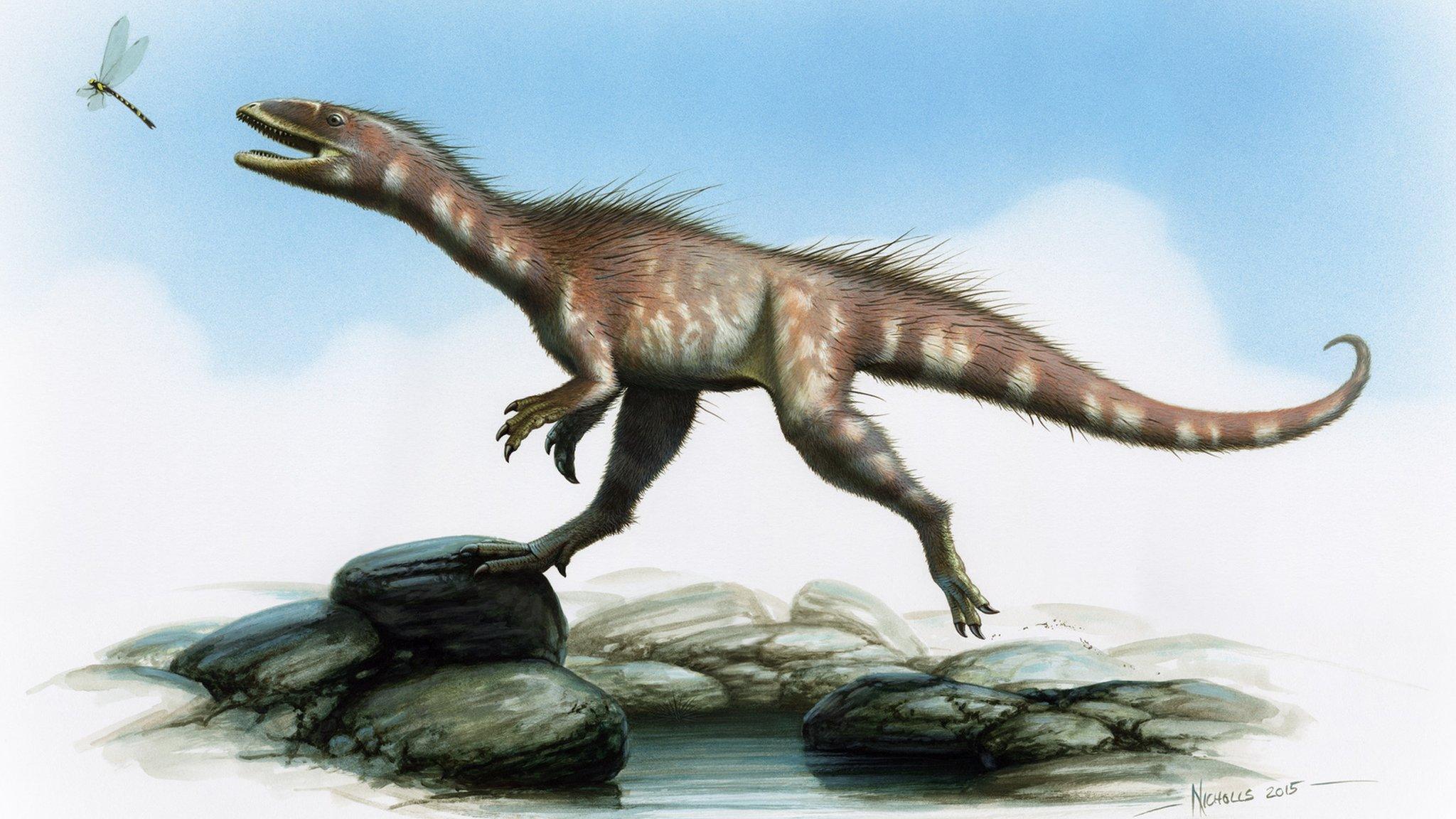Welsh dinosaur named 'dragon thief'
- Published
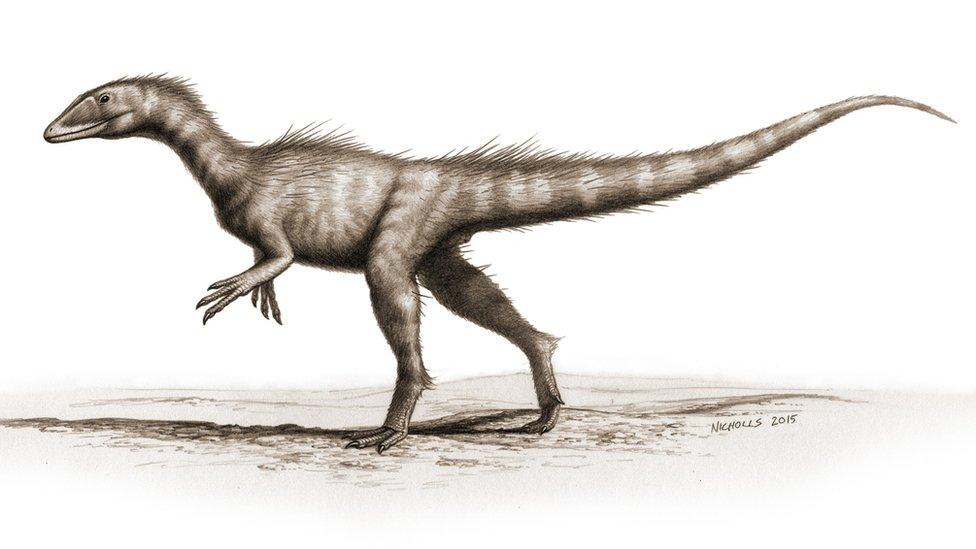
Artist's impression: The Welsh specimen was a juvenile, measuring about 2m from nose to tail tip
A 201-million-year-old dinosaur that fell out of a cliff face at Penarth in South Wales in 2014 has been formally named as Dracoraptor hanigani.
Loosely translated, the Dracoraptor part means "dragon thief"; hanigani honours Rob and Nick Hanigan - the two fossil-hunting brothers who found it.
In a new analysis, scientists say the specimen is possibly the oldest known Jurassic dinosaur from the UK.
It also marks a key moment in dinosaur evolution, they tell PLoS One journal, external.
Dr Dave Martill from Portsmouth University and colleagues say some 40% of the animal was preserved, including its skull, claws, teeth and foot bones.
Forty percent is a lot in fossil terms and has allowed most of the animal to be reconstructed because of the symmetry that exists in the body.
The team says very precise dating was made possible in this case because the remains were sandwiched between well-documented fossils of ammonites (extinct molluscs) and conodonts (a tiny eel-like creature).
This age - of 201.3 million years (plus or minus 200,000 years) - puts Dracoraptor hanigani right at the base of the Jurassic Period, just after the Triassic.
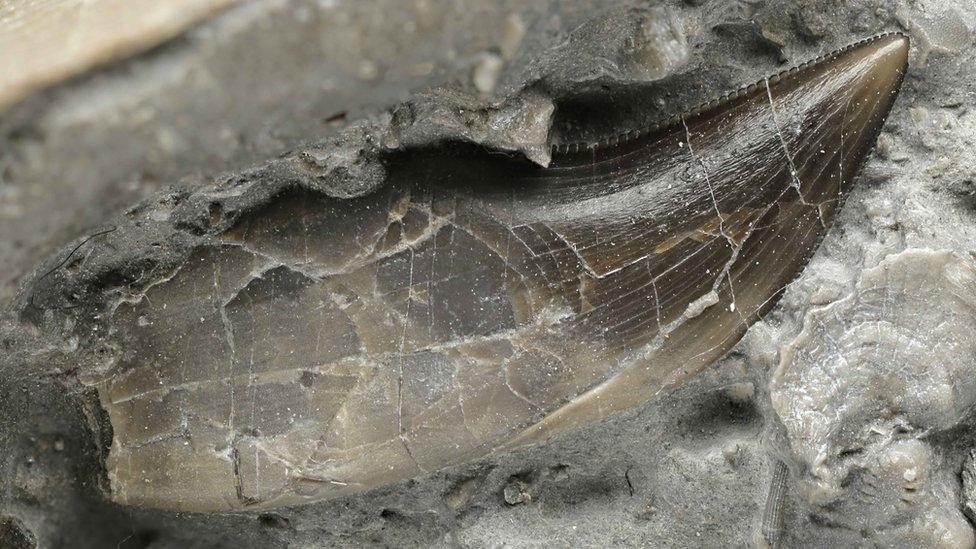
It probably ate large insects, lizards, and other small animals, maybe even other young dinosaurs
The boundary marks a mass extinction event when at least half the species on Earth (including conodonts) are thought to have gone extinct - perhaps because of an asteroid strike or massive volcanism, or a combination of both.
Whatever the cause, the disruption is recognised to have opened the door to dinosaurs to assume dominance.
This makes the Welsh discovery particularly interesting.
"It's right at that point in the diversification of dinosaurs where so-called therapod dinosaurs - the meat-eating ones - became what are called neotherapods. It's from this moment onwards that they go on to become all the forms we know, like T. rex, Velociraptor and even birds," explained team-member Steven Vidovic.
"The reason we know the age of the dinosaurs - what we call the Mesozoic Era - is because of this Triassic-Jurassic extinction event.
"But we actually understand very little about that early phase of the Jurassic. It's not until the Middle Jurassic that we get all the diversity and forms that you know from children's books.
"So, everyone's been hunting for these really early Jurassic specimens, going to exotic places in Africa, North and Central America, and then a couple of brothers stumble across something on a beach near Cardiff."
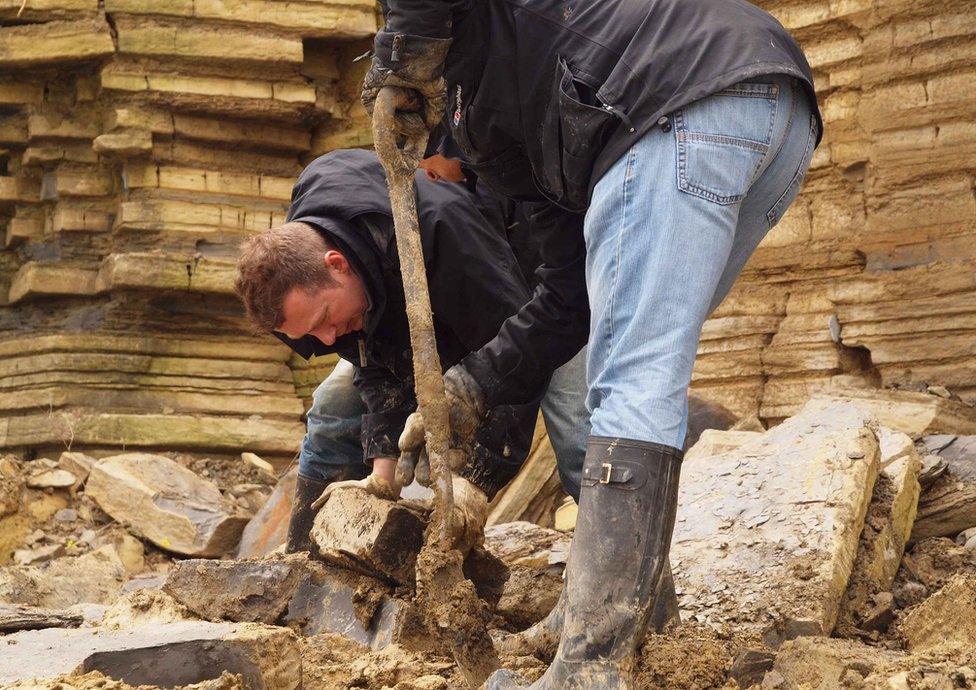
The name honours in part Rob and Nick Hanigan
Dr Martill added: "We invited Rob and Nick to name this beautiful little dinosaur and they suggested Dracoraptor after 'draco' meaning 'dragon', the national symbol of Wales, and 'raptor' meaning 'thief' or 'plunderer'.
"The draco part of the name seemed fitting because the fossils were found in Wales and will be displayed in Wales, reflecting the red dragon of the Welsh flag. Dracoraptor was a meat-eating dinosaur that would have used its small needle-sharp teeth with steak-knife serrations to pinch bits of meat here and there, hence the part of its name meaning thief.
"Although the Hanigan brothers chose the generic name, we also wanted to credit them, which is why the full name of the species is in fact Dracoraptor hanigani."
A fascinating aspect of this dinosaur is the context of its burial: the animal was encased in marine rocks, meaning its body was somehow transported out to sea before settling into sediments.
"Two-hundred-million-years ago, the UK was a series of islands," said Mr Vidovic. "When it sank, it must have sunk pretty quickly because it's so complete. What we do see is that when it got to the bottom, sea urchins crawled all over it, a bit like you get with a whale carcass now. And we've actually got some of those (fossilised) sea urchins. It's they who jumbled the bones up and made them into such a wonderful puzzle."
The Hanigan brothers have donated the dinosaur to Amgueddfa Cymru-National Museum of Wales, external.
The PLoS One paper has authors from the museum, and Portsmouth and Manchester universities.
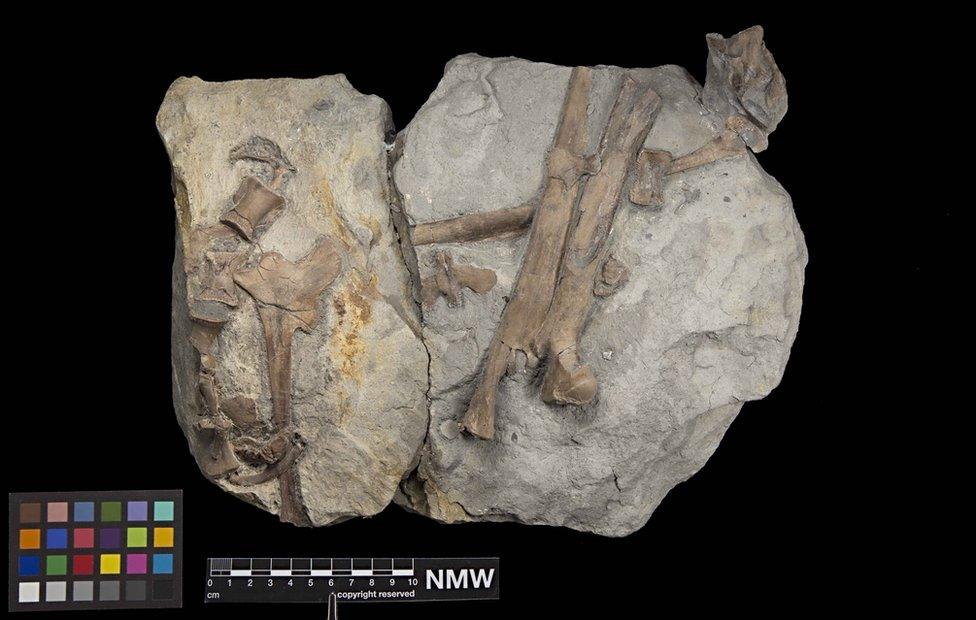
The specimen comes from a key moment in dinosaur evolution
Jonathan.Amos-INTERNET@bbc.co.uk, external and follow me on Twitter: @BBCAmos, external
- Published26 August 2015
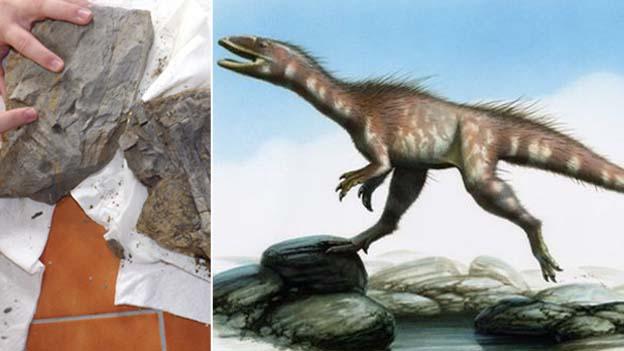
- Published9 June 2015
